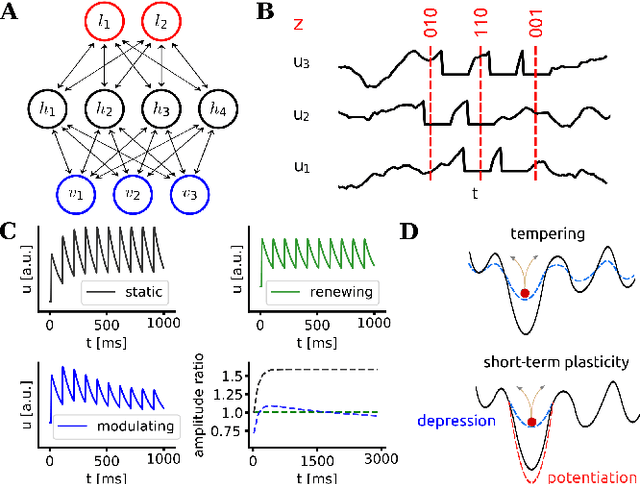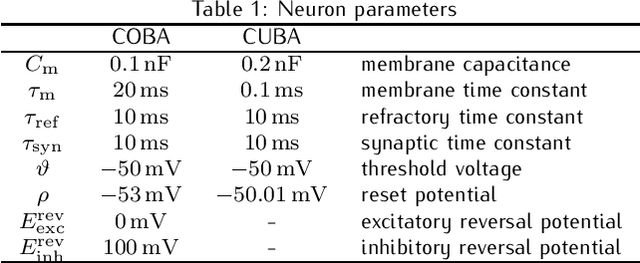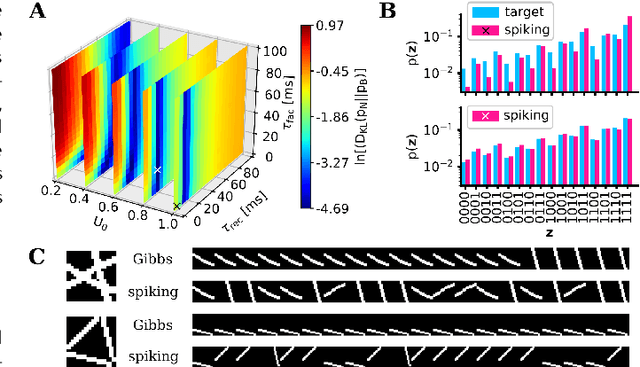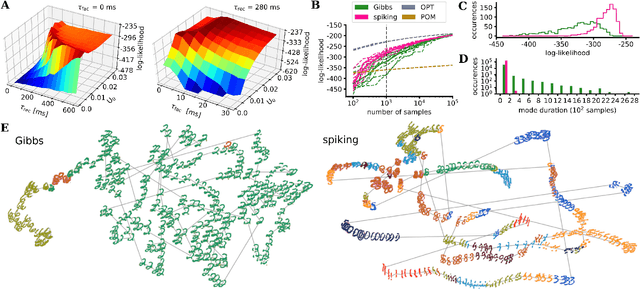Spiking neurons with short-term synaptic plasticity form superior generative networks
Paper and Code
Oct 10, 2017



Spiking networks that perform probabilistic inference have been proposed both as models of cortical computation and as candidates for solving problems in machine learning. However, the evidence for spike-based computation being in any way superior to non-spiking alternatives remains scarce. We propose that short-term plasticity can provide spiking networks with distinct computational advantages compared to their classical counterparts. In this work, we use networks of leaky integrate-and-fire neurons that are trained to perform both discriminative and generative tasks in their forward and backward information processing paths, respectively. During training, the energy landscape associated with their dynamics becomes highly diverse, with deep attractor basins separated by high barriers. Classical algorithms solve this problem by employing various tempering techniques, which are both computationally demanding and require global state updates. We demonstrate how similar results can be achieved in spiking networks endowed with local short-term synaptic plasticity. Additionally, we discuss how these networks can even outperform tempering-based approaches when the training data is imbalanced. We thereby show how biologically inspired, local, spike-triggered synaptic dynamics based simply on a limited pool of synaptic resources can allow spiking networks to outperform their non-spiking relatives.
 Add to Chrome
Add to Chrome Add to Firefox
Add to Firefox Add to Edge
Add to Edge